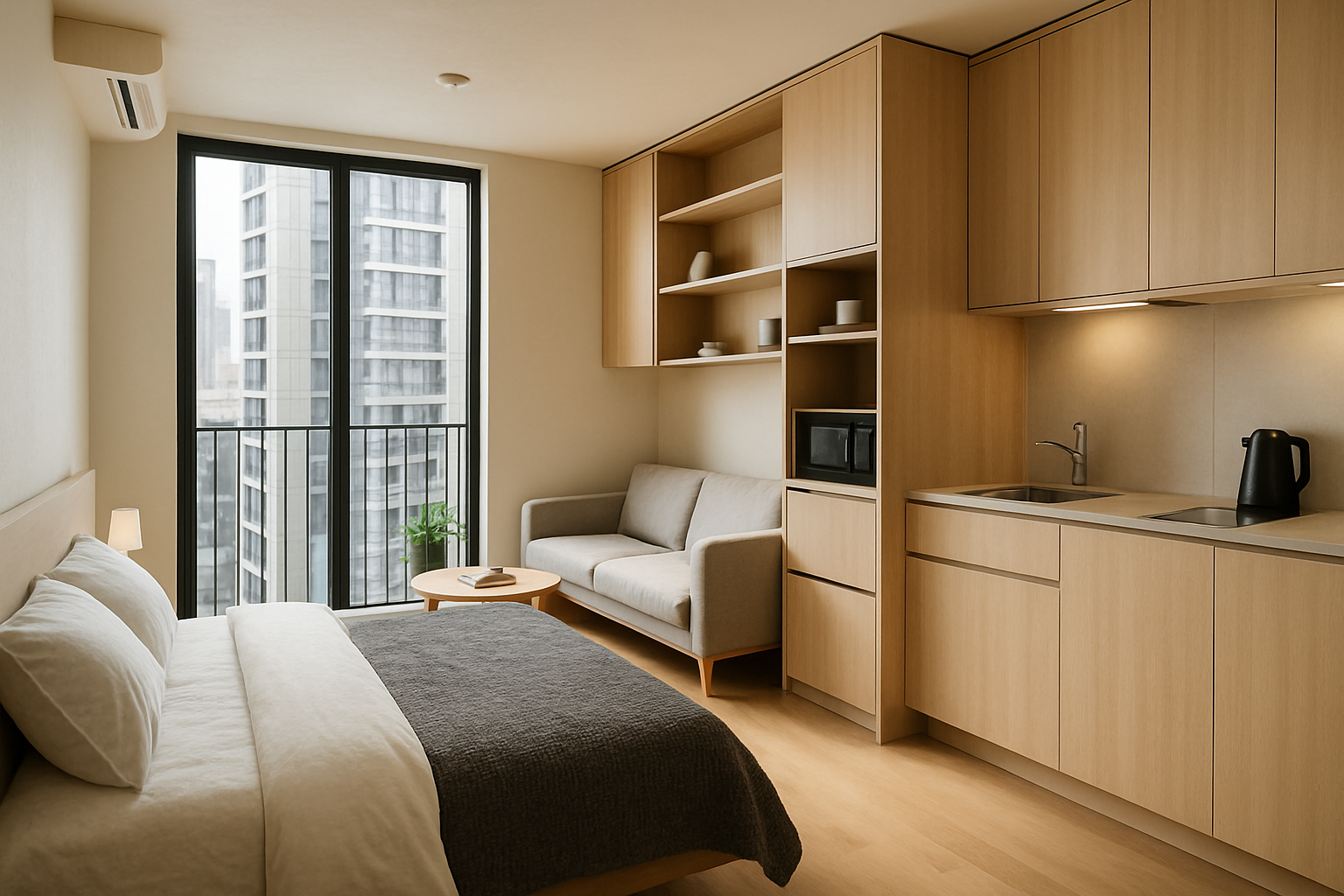Title: Microunit Apartments: The Future of Urban Living?
Introduction: In the ever-evolving landscape of real estate, a new trend is emerging that's reshaping urban living: microunit apartments. These compact living spaces, typically under 400 square feet, are gaining traction in densely populated cities worldwide. With skyrocketing housing costs and changing lifestyle preferences, microunits offer a unique solution to the urban housing crunch. But what exactly are these tiny dwellings, and how are they transforming the real estate market?

Driving Forces Behind the Trend
Several factors contribute to the growing demand for microunit apartments. Urbanization continues to drive people into city centers, where traditional housing options are becoming increasingly unaffordable. Millennials and young professionals, in particular, are drawn to the idea of living in prime locations without breaking the bank. Additionally, the minimalist lifestyle movement has gained traction, with many individuals prioritizing experiences over possessions and seeking to reduce their environmental footprint.
Economic Implications for Developers and Investors
From a real estate investment perspective, microunit developments present an intriguing opportunity. These projects often yield higher returns per square foot compared to traditional apartments. Developers can maximize the number of units in a given space, potentially increasing rental income. However, construction costs can be higher due to the need for specialized design and fixtures. Investors should also consider potential regulatory hurdles, as some cities have minimum size requirements for residential units.
Impact on Urban Planning and Infrastructure
The proliferation of microunit apartments is reshaping urban landscapes and challenging traditional zoning laws. Cities must grapple with increased population density and its impact on local infrastructure. On the positive side, microunits can help alleviate housing shortages and potentially reduce urban sprawl. However, concerns about overcrowding and strain on public services need to be addressed. Some cities are revising building codes and zoning regulations to accommodate this new housing model while ensuring livability standards are met.
Tenant Perspective: Pros and Cons
For renters, microunit living offers both advantages and drawbacks. The primary appeal is affordability and location—tenants can live in desirable neighborhoods that might otherwise be out of reach. The minimalist lifestyle can also be liberating for some, forcing a focus on experiences rather than material possessions. However, the limited space can be challenging, especially for those used to larger living quarters. Issues like storage, entertaining guests, and maintaining work-life balance in a compact space are common concerns among microunit dwellers.
Design Innovations in Micro Living
Architects and designers are rising to the challenge of creating functional, appealing microunit spaces. Innovative solutions include transformable furniture, such as beds that convert into desks or dining tables, and movable walls that can reconfigure spaces for different uses. Vertical storage solutions and multi-purpose built-ins are becoming standard features. Some developments are also incorporating shared amenities like communal kitchens, lounges, and workspace to complement the private units and foster a sense of community.
Future Outlook and Market Potential
As urban populations continue to grow and housing affordability remains a pressing issue, the microunit trend is likely to persist and evolve. We may see increased integration of smart home technology to further enhance the efficiency of these small spaces. There’s also potential for microunit concepts to expand beyond the rental market into affordable homeownership options. However, the long-term sustainability of this housing model will depend on how well it adapts to changing demographics, lifestyle preferences, and regulatory environments.
Challenges and Considerations
Despite the growing popularity of microunits, several challenges remain. Critics argue that these small living spaces may lead to social isolation or compromise quality of life. There are also concerns about the potential for overcrowding and the impact on neighborhood character. From a real estate perspective, the longevity of the trend and the resale value of microunit developments are still uncertain. Investors and developers must carefully consider these factors alongside the potential benefits when evaluating microunit projects.
In conclusion, microunit apartments represent a significant shift in urban housing dynamics. They offer a creative solution to housing affordability and density challenges in major cities. While not without controversy, this trend reflects changing attitudes towards living space and urban lifestyles. As the real estate market continues to evolve, microunits may well play a crucial role in shaping the future of urban living. Whether this housing model will become a lasting fixture or a passing trend remains to be seen, but its impact on the current real estate landscape is undeniable.





